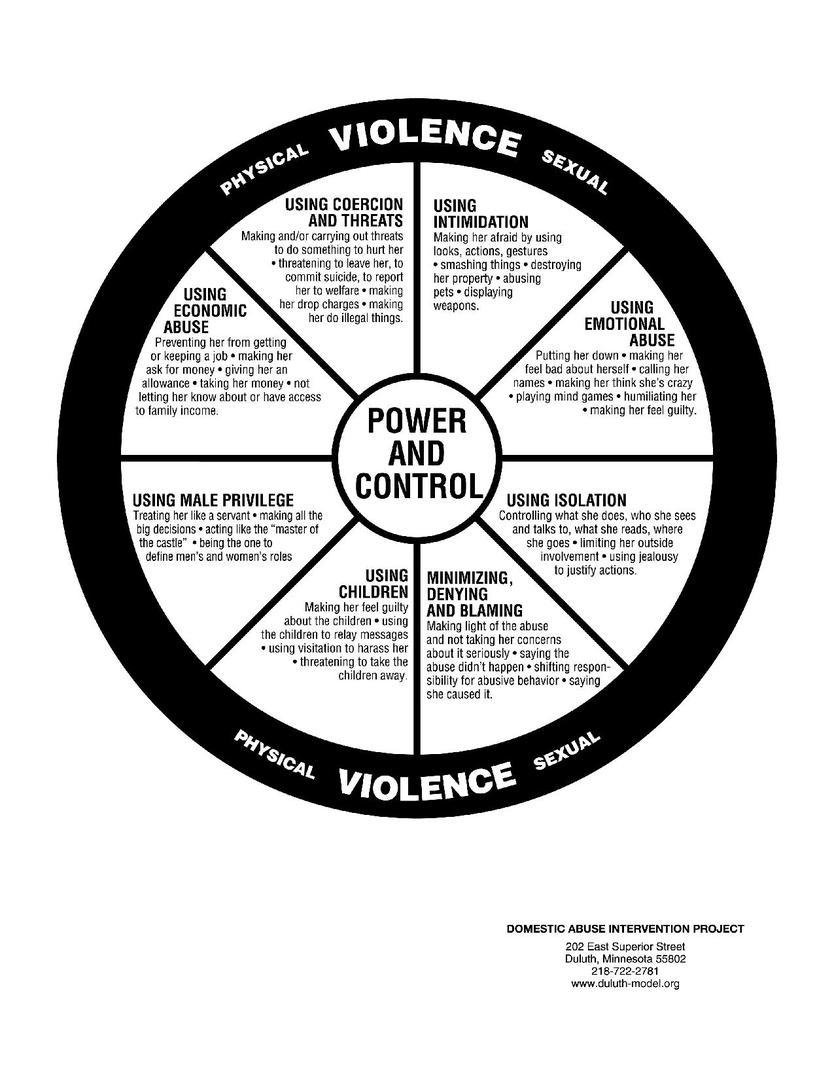What is Domestic Violence?
Domestic Violence
Domestic Violence occurs in intimate relationships when one partner abuses the other. It can be physical, emotional, sexual or a combination of all. Domestic Violence can be committed by a man toward a woman, a woman toward a man, a man toward a man, or a woman toward a woman. It can happen in all types of relationships, LGBTQ or heterosexual, and to all types of people, regardless of race or social standing. It is important to recognize the signs of abusive relationships and domestic violence, as it can escalate quickly.
Physical Abuse is any type of aggressive act toward a partner. It can start with actions such as pushing, shoving, or grabbing of the wrist, and may worsen to include hitting, slapping, punching, kicking, or slamming to the floor or into objects. Physical Abuse can also include the forcing of a partner to take part in sexual acts. This is also known as Sexual Abuse.
Emotional Abuse is equally as harmful in an intimate relationship, and is often recognized through the blatant or subtle humiliation of one partner by the other. Emotional Abuse can occur through verbal humiliation or put downs, making negative comments about a person’s body or appearance, threats of violence, control of a partner’s physical activity, isolation of a partner, and/or control and limitation of finances. Another form of emotional abuse is manipulation, and can be seen when one partner uses children, friends, or family members as leverage to control or get the other partner to give into their demands. This can also occur when one partner threatens to withhold the children from the other. This can lead to severe impacts on the children and families involved.
If your or someone you know is facing these types of abuse it is important to seek help and get informed on the best possible way to leave the relationship. If you find yourself in a situation where you fear for your life The Seven Dancers Coalition urges you to contact local authorities or agencies for help immediately.
The following provides a visual tool for recognizing abusive behavior.
Young Haudenosaunee Men Respecting Women
This movie is a collaboration with SRC Native Film, Mohawk Club and the 1491s. For the Haudenosaunee people, violence against women was virtually unheard of pre-contact. Today it is a real concern to the youth and to the community today. This portrayal invites both the abusers and the survivors of domestic violence back into the circle, back to the traditional way for respecting women. This project was sponsored by the the 7 dancers coalition. 2014.
Karonienhawi Thomas speaking to our young adults and their parents at Ohero:ken.
The Wheels
The Power and Control Wheel
The following provides a visual tool for recognizing abusive behavior. This is the Power and Control wheel which was developed by the Domestic Abuse Intervention Project in 1984. It is important to note that this wheel is focused on Domestic Violence toward women, but can be adapted. Please visit the duluthmodel.org Website for a full description of the wheels.
The Wheel of Equality
This wheel is a visual depiction of the types of changes an abuser can make toward ending intimate partner violence.
Feel free to visit the following websites for more information
http://www.domesticviolenceroundtable.org/domestic-violence-cycle.html
http://www.theduluthmodel.org/about/index.html





